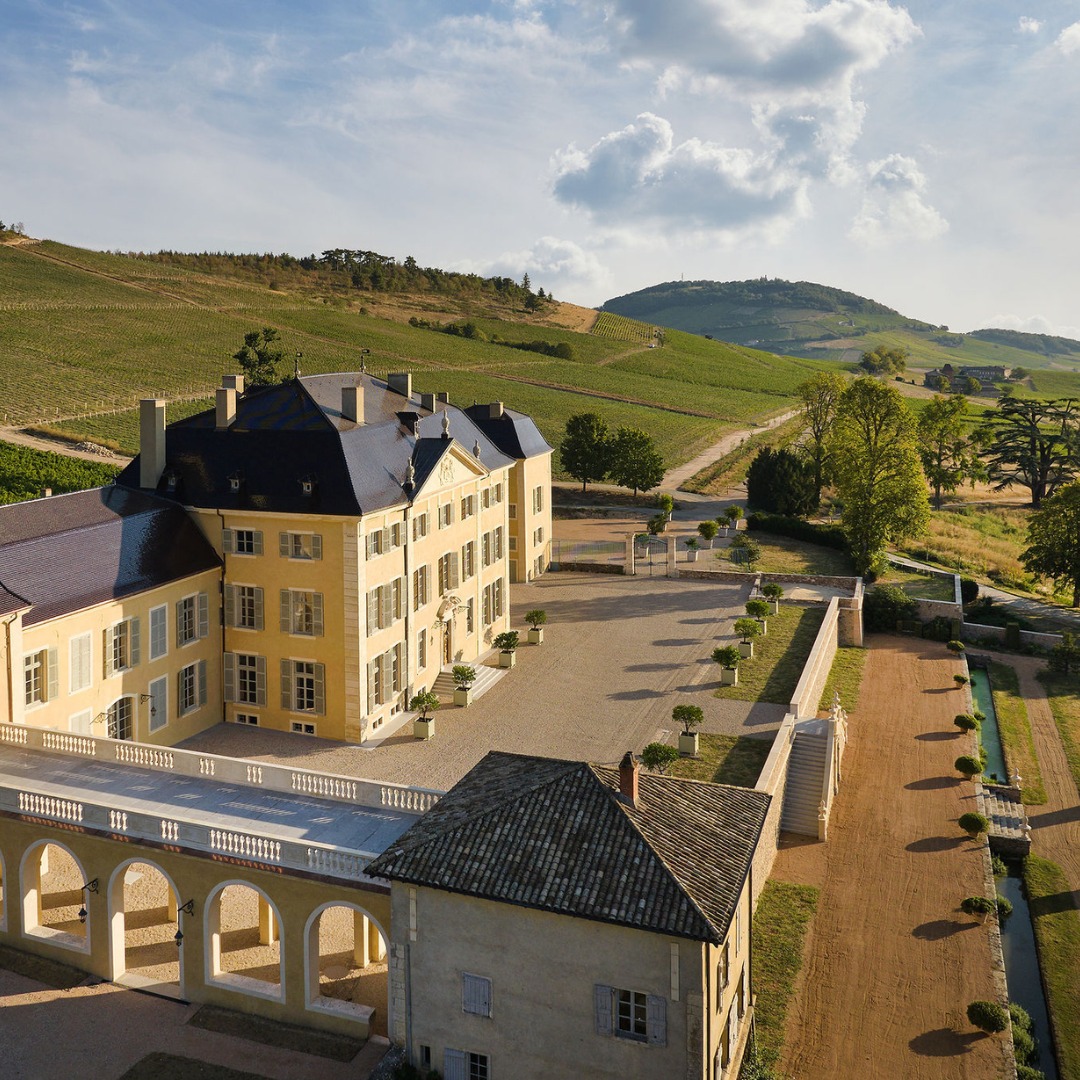Discover 14 must-visit Beaujolais estates for a technical tasting, featuring exceptional vintages, natural wines, and renowned labels.
The Beaujolais vineyard, often reduced to the festive image of Beaujolais Nouveau, hides a much greater and more structured richness. With its ten crus and granite or clay-limestone terroirs, the region produces a wide variety of wines, ranging from fruity and accessible cuvées to deep and age-worthy expressions. This rigorous selection of 14 estates offers a technical and representative overview of today’s Beaujolais: historic estates, independent winemakers, organic or natural wine approaches, each with a distinct identity. Morgon, Fleurie, Moulin-à-Vent and Brouilly reveal their character through precise winemaking and aging practices. This guide is intended for curious amateurs and connoisseurs alike who are looking for reliable addresses to discover the complexity of Gamay.
The best estates in Beaujolais
1. Château de Pizay – Morgon
Château de Pizay is a historic landmark in Beaujolais, both for its 14th-century architecture and the diversity of its production. Located in Belleville-en-Beaujolais, the estate cultivates around 80 hectares in the Morgon and Régnié AOCs. The granite terroir, characteristic of the region, gives the wines a distinctive structure and good aging potential, particularly for Morgon wines. This estate combines tradition and modernity: its technical facilities are adapted to precision winemaking, and the vaulted cellars provide an optimal environment for aging. The experience is enriched by a 4-star hotel and a sensory tasting tour, making it a place suitable for both wine lovers and novices. The wines of Château de Pizay are consistent, well-made, without seeking exuberance. The emphasis is on clean aromas, the expression of Gamay and respect for the vintage. The estate deserves its place in this selection for its consistent quality, its comprehensive wine tourism offering, and its ability to represent the classic but solid identity of Beaujolais. It is a structured gateway to the region.
2. Domaine Jean Foillard – Villié-Morgon
Jean Foillard is an iconic figure in natural wine in Beaujolais, and his estate in Villié-Morgon perfectly illustrates the ability of Gamay to produce deep, complex, and long-lasting wines without the use of conventional winemaking inputs. Inspired by Jules Chauvet, a pioneer of sulfur-free wine, Foillard works his vines without herbicides or synthetic products, based on a philosophy of respect for life. The wines are made with indigenous yeasts, without chaptalization or filtration, allowing for a raw but controlled expression of the Côte du Py terroir. The Morgons produced here have a silky texture, great drinkability, and remarkable density. These are not simple or easy wines; they require some attention when opened, but reward with depth. The estate does not seek to seduce immediately, but rather to capture the energy of the soil and the vine. It fully deserves its place among the Beaujolais references for its rigorous commitment, consistent quality, and sincerity of its wines. An essential address for lovers of lively wines.
3. Château Thivin – Côte de Brouilly
Château Thivin is often cited as one of the finest examples of the Côte de Brouilly, an appellation located on the slopes of the volcanic Mont Brouilly. This very specific terroir, based on blue stones and schist, gives the Gamay a mineral tension and a more assertive tannic structure than in other crus. The family estate, managed by the Geoffray family since 1877, now covers around 27 hectares, with a sustainable, even organic approach depending on the plot. Vinification is traditional, with well-controlled semi-carbonic maceration and aging in large oak casks that preserve the freshness and drinkability of the wines. Château Thivin stands out for the consistency of its wines, which are straightforward, precise, and elegant, always with a beautiful balance between fruit, acidity, and structure. The estate’s exceptional setting, with its golden stone buildings and listed gardens, adds to the wine tourism experience, but the essential remains in the glass. This estate fully deserves its place for its rigorous winemaking, its loyalty to its terroir and the finesse of its expressions of the Côte de Brouilly. A historical reference that is still relevant today.
4. Domaine du Clos du Fief – Juliénas
The Domaine du Clos du Fief, run by Michel Tete and his son Sylvain, embodies a demanding winemaking tradition in Juliénas. The estate’s 17 hectares are mainly covered by the Juliénas and Saint-Amour appellations, two crus in the north of Beaujolais that offer complementary profiles: structure and black fruit for Juliénas, finesse and floral notes for Saint-Amour. The work in the vineyard is rigorous, with conventional, sustainable viticulture, no weedkillers, and controlled yields. In the cellar, the traditional Beaujolais method is followed: semi-carbonic maceration, long vatting, and aging in concrete vats or barrels depending on the cuvée. The result is clear: the wines are solid, straightforward, without any stylistic affectation, and express the Gamay grape variety with honesty. This estate is often praised for the precision of its winemaking, the consistency of its vintages, and the clarity of its style. The estate’s setting, perched above the hillsides, offers an ideal environment for tasting. Clos du Fief deserves its place on this list for its seriousness, its fidelity to the style of northern wines, and the honesty of its vintages. A technical, understated, but very reliable estate.
5. Domaine Chignard – Fleurie
Located in Fleurie, Domaine Chignard is a small family estate covering 8 hectares, centered on the lieu-dit “Les Moriers,” one of the most renowned in the appellation. The predominantly granite terroir is south-east facing on fairly steep slopes, which promotes aromatic concentration while maintaining natural acidity. The winemaking process follows traditional methods: manual harvesting, semi-carbonic maceration and the use of concrete vats. Intervention in the cellar is minimal but precise. The estate’s wines are renowned for their aromatic finesse, silky texture and aging potential. They offer floral aromas (peony, violet), delicate red fruit and a minerality that structures the palate. These are elegant wines, without excess, which respect the natural balance of the grape and the soil. The absence of wood and the search for pure fruit reinforce their clarity. Domaine Chignard deserves its place in this selection for the consistency of its style, the precision of its wines, and its ability to embody the spirit of Fleurie. A discreet but solid address for lovers of fine wines.
6. Domaine Piron – Morgon and Chénas
Domaine Piron, founded by Dominique Piron, is one of the great Beaujolais estates in terms of size and diversity of terroirs. Based in Villié-Morgon, the estate cultivates more than 90 plots spread over several crus, notably Morgon, Chénas, and Moulin-à-Vent. This mosaic allows for rigorous plot-by-plot vinification, faithfully reflecting the region’s micro-terroirs. The granitic, decomposed soil of Morgon produces deep, full-bodied wines, while the more clay-siliceous plots of Chénas yield more floral and mineral cuvées. The vinification is carefully adapted to each batch: partial destemming, long maceration, and aging in vats or barrels depending on the desired profile. The estate recently added a modern and educational tasting room that highlights the terroir-driven approach. The wines of Domaine Piron are distinguished by their frankness, freshness, and accessibility, while maintaining a serious structure. They are designed to be enjoyed young but can also evolve. The estate deserves its place on this list for its consistency, its technical vision of Beaujolais and its commitment to passing on its knowledge. It is a recommended address for those who want to explore the differences between the crus in a structured way.
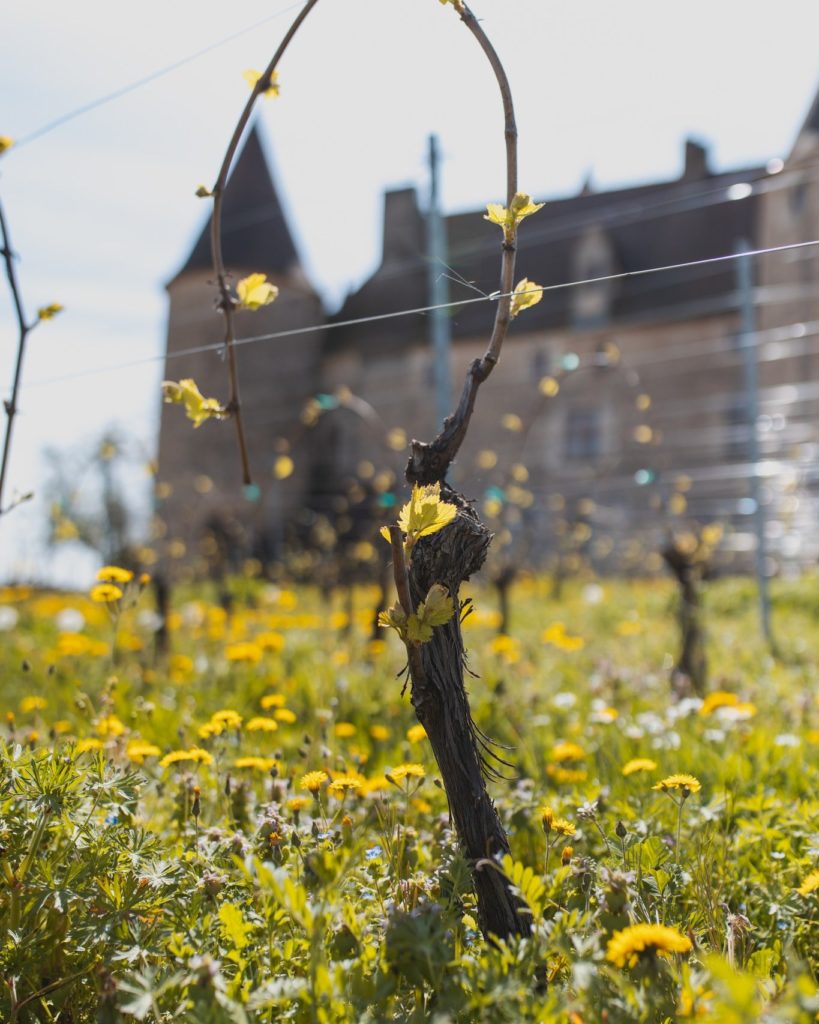
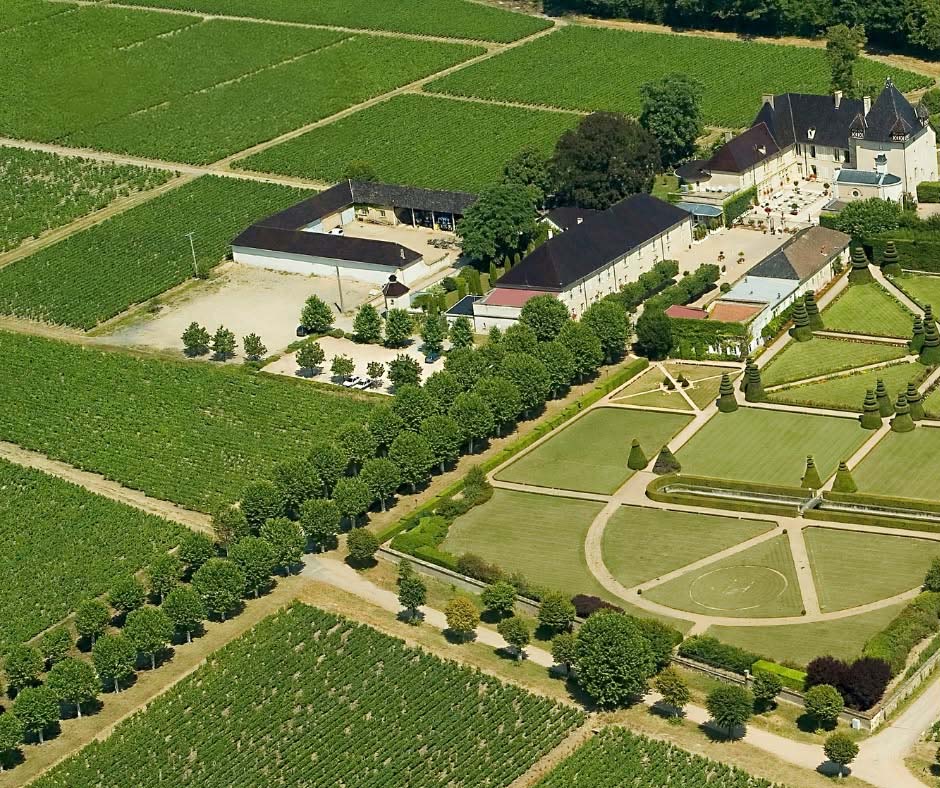
7. Château de la Chaize – Brouilly
Château de la Chaize, located in Odenas, is a historic player undergoing a renaissance. Founded in 1676, it is one of the largest estates in Beaujolais with 99 hectares in a single block, exclusively in the Brouilly appellation. The soil, derived from volcanic rock and pink granite, produces full-bodied, structured wines with beautiful mineral tension. Since its takeover by the Gruy family in 2017, the estate has undertaken a conversion to organic farming and focuses on manual harvesting, gravity-fed vinification, and a fleet of casks and amphorae for aging. This increased precision is paying off: the Brouilly wines of Château de la Chaize are gaining depth, with fine tannins and a more faithful expression of the terroir. The approach is ambitious but sincere, focused on sustainable, high-quality viticulture. The entire site has been perfectly restored and offers a prestigious setting for wine tasting. The estate deserves its place for the quality of its investments, its renewed technical rigor, and its determination to restore Brouilly to its place among the great wines of Beaujolais. This is an estate with a bright future, one to watch closely in the years to come.
8. Château de Corcelles – Beaujolais-Villages
Château de Corcelles is a historic estate in the southern Beaujolais region, whose foundations date back to the 15th century. Today, it covers 90 hectares and mainly produces Beaujolais-Villages and Brouilly wines. The estate combines architectural tradition and serious wine production with a desire to open its doors to the public through organized tours, tastings, and a well-designed shop. In the vineyard, agriculture is sustainable, with regular soil work and mostly manual harvesting. Vinification remains traditional, with semi-carbonic maceration followed by aging in vats or casks depending on the cuvée. The wines produced are honest, clean, and easy to drink. We particularly appreciate the consistency of the Beaujolais-Villages, which are supple, fruity, and well-balanced. This is not a place to look for extreme complexity, but rather authenticity and accuracy in the expression of Gamay. Château de Corcelles deserves its place in this selection for its ability to offer reliable, well-made wines and for its important role in promoting wine tourism in the southern Beaujolais region. It is a recommended address for a first approach to the vineyard.
9. Domaine Jules Desjourneys – Fleurie
Domaine Jules Desjourneys, founded by Fabien Duperray, is one of the most demanding projects in contemporary Beaujolais. A former distributor of fine Burgundy wines, Duperray brought this rigor to Beaujolais when he settled in Fleurie. The wines are made from densely planted, certified organic vines with extremely low yields, sometimes less than 20 hl/ha. Vinification is long and natural, with no filtration or fining. The wines are aged, often in Burgundy barrels, for between 18 and 24 months, giving them a surprisingly velvety texture, unusual depth for Gamay, and exceptional aging potential. The cuvées are deliberately atypical in style: closed when young, they evolve with intensity. These are a far cry from the fruity Beaujolais wines meant to be drunk quickly. Desjourneys wines require patience and understanding. They divide opinion, but they never leave you indifferent. The estate deserves its place in this selection for its radical approach, technical precision, and determination to raise Beaujolais to the level of great wines for aging. This is a place for connoisseurs, reserved for discerning palates.
10. Domaine Marcel Lapierre – Villié-Morgon
Domaine Marcel Lapierre is one of the pillars of the natural wine movement in Beaujolais, and probably its best-known name internationally. Starting in the 1980s, Marcel Lapierre, inspired by Jules Chauvet, questioned standard winemaking practices and returned to methods without sulfur, commercial yeasts, or chemical inputs. Now run by his son Mathieu, the 13-hectare estate in Villié-Morgon produces Morgon wines from the “Côte du Py” climate, on very well-drained granite soils. Vinification is carried out with indigenous yeasts, with gentle extraction, aging in old barrels, and minimal sulfiting only at bottling. The result is impressive: wines of great purity, vibrant, with intense but never jammy fruit, and an airy texture that makes them ideal for fine dining. They age very well in the cellar, although their charm is also evident when young. Domaine Lapierre deserves its place for having opened up a new path in the region, always with the highest standards. It is a safe bet for those who want to understand the essence of natural wine without compromising on quality.
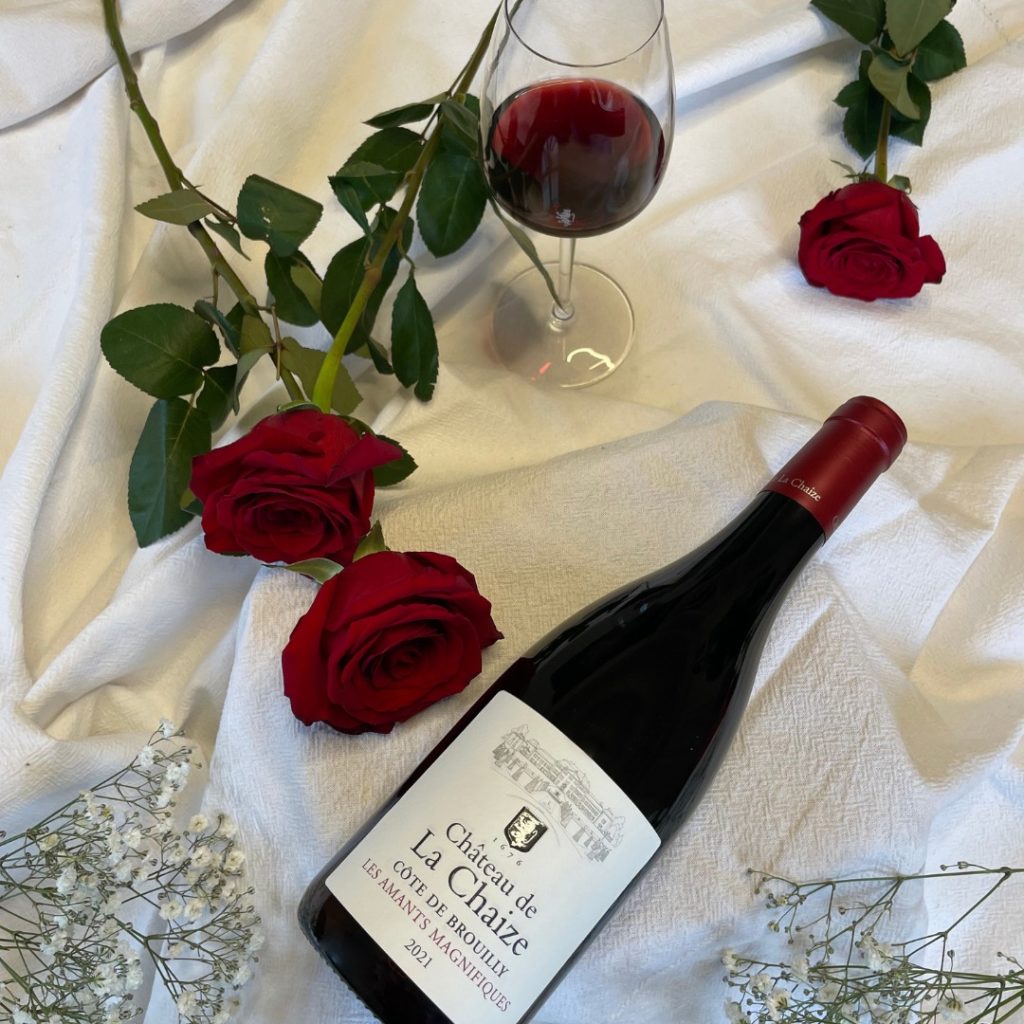
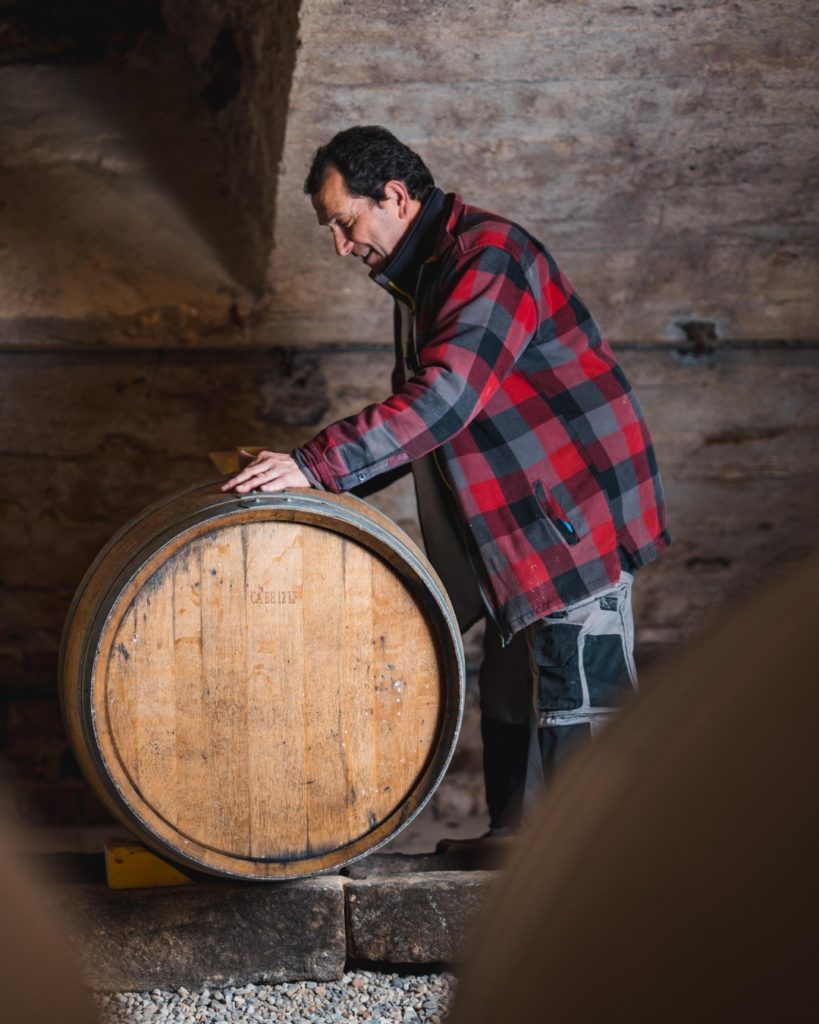
11. Domaine Louis Jadot – Château des Jacques – Moulin-à-Vent
Château des Jacques, owned by Louis Jadot since 1996, represents one of the most ambitious investments in Beaujolais by a major Burgundy player. Located in Romanèche-Thorins, the estate covers more than 80 hectares in the Moulin-à-Vent appellation, often considered the most “Burgundian” cru in Beaujolais. The terroir is based on granite soils enriched with clay and manganese, which favors the production of powerful, structured wines with good aging potential. Jadot applies a rigorous technical approach here: manual harvesting, partial destemming, long maceration, and aging in Burgundy oak barrels for 12 to 18 months. The wines are clearly built for aging, with fine tannins, great concentration, and the ability to evolve with notes of black fruit, spices, and undergrowth. These are a far cry from the Beaujolais primeurs: the Château des Jacques wines need time to open up. This estate deserves its place in this selection for its rigorous winemaking, its roots in the terroir, and its commitment to quality. It is aimed at lovers of structured wines that can rival good Pinot Noirs.
12. Domaine Yohan Lardy – Fleurie
Based in Fleurie since 2012, Yohan Lardy is part of the new generation of Beaujolais winemakers who combine ecological awareness with technical precision. He farms just over 5 hectares in the Fleurie and Moulin-à-Vent appellations, notably in the “Les Michelons” climat, a steeply sloping granite terroir. The vineyard is certified organic, with horse-drawn plowing, limited use of sulfur and copper, and manual harvesting. Vinification is minimal but closely monitored: semi-carbonic maceration, fermentation with indigenous yeasts, little or no sulfur. Aging takes place in large oak barrels or amphorae, in a style that promotes finesse and verticality. The wines are expressive without being showy, with aromas of fresh red fruit and flowers, and a marked mineral finish. Their texture on the palate is supple, almost crystalline. Domaine Yohan Lardy deserves its place on this list for the consistency of its approach, the purity of its wines, and its desire to express the terroir without artifice. A promising address, already confirmed by the quality of the latest vintages.
13. Domaine des Terres Dorées – Jean-Paul Brun – Charnay
Jean-Paul Brun, a winemaker based in Charnay, is known for his unusual interpretation of Gamay and Beaujolais. Domaine des Terres Dorées covers around 30 hectares in the Beaujolais and Beaujolais-Villages appellations and a few crus (Moulin-à-Vent, Fleurie). The soils of Charnay are more limestone than in the north of Beaujolais, giving the wines a different tension, often closer to southern Burgundy. Jean-Paul Brun vinifies in a very hands-off manner, with indigenous yeast fermentations, systematic destemming (unlike traditional carbonic maceration), and aging in vats or barrels depending on the cuvée. This method brings out a more “Burgundian” expression of Gamay, focused on precision, straightforwardness, and elegance. The wines are clean, balanced, often very drinkable, but with a serious undertone. The estate also offers interesting and structured Chardonnay-based whites. This estate deserves its place for the clarity of its vision, the consistent quality of its wines, and its ability to offer an alternative but convincing interpretation of Beaujolais. Ideal for those looking for an educational wine without caricature.
14. Domaine Julien Sunier – Avenas
Julien Sunier, who settled in Avenas in 2008, embodies the new wave of organic winemakers in Beaujolais. A former Burgundy winemaker, he brings a very precise approach to winemaking and meticulous attention to soil management to Gamay.
The estate now cultivates around 8 hectares spread over the Fleurie, Régnié, and Morgon crus. The entire estate is farmed organically with a gradual transition to biodynamics. Julien Sunier practices gentle winemaking: manual harvesting, whole bunches, maceration in concrete vats, sulfur-free fermentation, and aging in used barrels for 8 to 10 months. His wines are immediately recognizable for their finesse, aromatic purity, and balance. They are fresh and infused, with fruit coming to the fore without any heaviness. The focus on digestibility is evident, and the aromatic precision is remarkable. The estate does not seek to show off, but rather to achieve perfection. Julien Sunier fully deserves his place in this selection for his high standards, the sincerity of his approach, and the consistent quality of his wines. A little-known estate, but already highly respected by discerning wine lovers.
XperienceFrance is your travel specialist in France.
